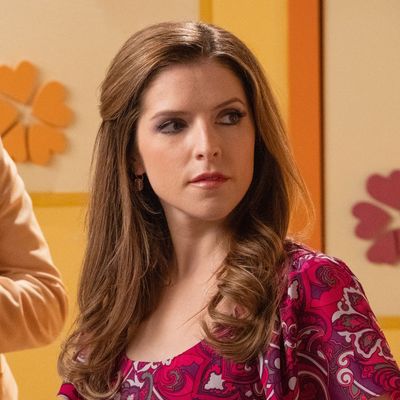
2024-10-19 05:45:03

Tony Hale and Anna Kendrick in Woman of the Hour.
Photo: Leah Gallo/Roadshow Films/Everett Collection
One would not expect Anna Kendrick’s directorial debut to be a grim serial-killer drama, but maybe that’s the point. The actress, known primarily for her lively work in comedies and musicals, also stars in the film, as aspiring performer Cheryl Bradshaw, a Columbia grad whom we first meet during what appears to be a botched audition. The year is 1978, and Cheryl’s days in Hollywood are not going well. Though a hard worker, she can’t seem to book a single role, in part because casting directors and filmmakers seem more concerned with whether she’ll smile and do nudity than whether she can act. (“She seems angry,” they whisper to each other, in her presence.) Her next-door neighbor and fellow actor Terry (Pete Holmes) is outwardly supportive but really just wants to get her into bed. Left without options, Cheryl reluctantly agrees to her agent’s suggestion that she appear on The Dating Game, as a way of getting her face out there. After all, this is a world in which women are ruthlessly judged by their looks and their charm; someone with more serious ambitions is just lost.
Also appearing on that same episode of The Dating Game as Bachelor No. 3 is Rodney Alcala, played by Daniel Zovatto, whom we have already met in the film’s opening scene, set in 1977 Wyoming, photographing a young woman, then strangling her. It’s all based on a totally insane true story: Alcala was a serial killer and rapist for over a decade in New York and California, and right in the middle of his unbelievable crime spree — after his appearance on the FBI’s Ten Most Wanted List and two stints in prison — he popped up on the legendary dating show.
The film intercuts Cheryl’s appearance with several of Alcala’s crimes as it jumps around the timeline. We see him in 1971, killing a flight attendant in New York who’s asked him for help moving some of her belongings into a new apartment. We see him in 1977, working as a typesetter for the Los Angeles Times, as he tries to lure a young man into a solo photo shoot. A promising director, Kendrick stages these sequences artfully, without relying on cheap suspense thrills or exploitative gore. She’s got a good eye, and a deft editing hand; she knows exactly when to cut away, when to provide a telling ellipsis. The overarching tone of these sequences is not suspense but sadness.
The film’s organizing principle conveys the frustratingly repetitive nature of this story. Despite plenty of warning signs and multiple run-ins with the law, Alcala was able to operate freely for years. The structure also conveys something else: In a world of sexist horndogs and dopes, Alcala often stands out as respectful, thoughtful. As played by Zovatto, he is knowledgeable, deferential, even a little charming. He’s studied film at UCLA and is up to date on independent theater and acclaimed literature. He tells one girl she reminds him of Linda Manz in Days of Heaven. He discusses Sam Shepard and Edward Albee with Cheryl. He talks a good game and says the right things. But of course, he’s also a psycho, and every once in a while, he says or does something that betrays the monster lurking within.
Unfortunately, as it plays out onscreen, Woman of the Hour isn’t quite as compelling as one might hope. Structuring the film around The Dating Game, where Cheryl is treated largely as a piece of meat by everyone (including the smug host, played with oily, soothing skeeziness by Tony Hale), might make for an intriguing thematic ploy, but it also settles the picture into a rote, dry cadence, as the story starts to feel overdetermined. (Even those unfamiliar with how Alcala’s appearance on The Dating Game turned out in real life can probably see some of the story beats coming.)
The circular structure, as much as it may make thematic sense, also prevents cohesion. We watch scenes from the life of a serial killer without really understanding much about him; nor do we ultimately learn much about Cheryl herself (about whom relatively little is known in real life).
The whole film feels a bit too careful: composed but also more than a little academic. It winds up existing mostly as a series of well-staged scenes all wrapped up in a bow that tells us the world is not safe out there. In our current, serial-killer- and true-crime-obsessed media landscape, that’ll get some clicks, but it won’t provide much new insight.




